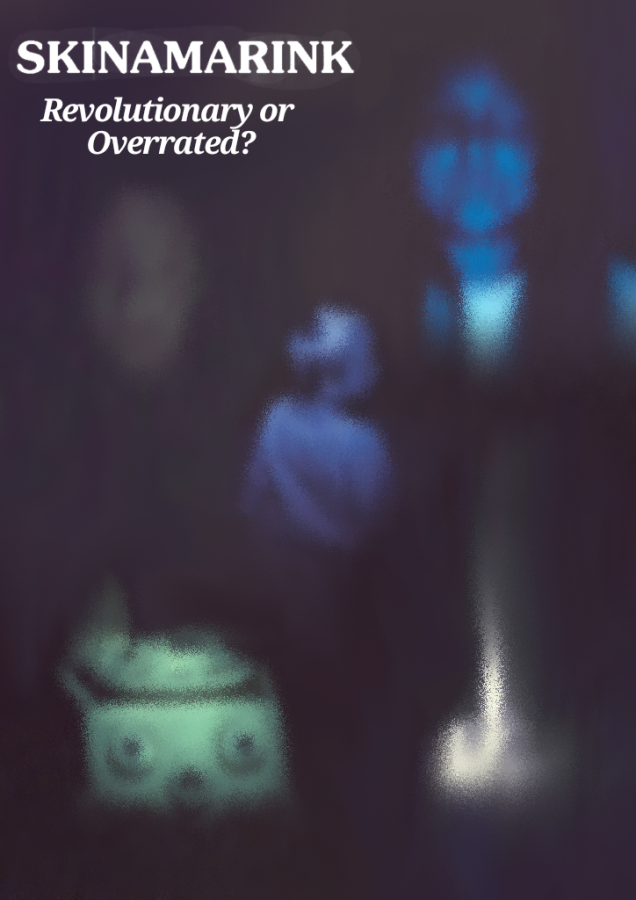Skinamarink: Revolutionary or Overrated?
March 24, 2023
A complex and artistic take on the increasingly popular “analog horror” genre, a class of typically online content utilizing low quality graphics and unsettling imagery, Skinamarink is said to be changing the future of horror movies as they bridge the gap between horror in film and horror in internet communities. First popularized by Marble Hornets and The Mandela Catalog, the categorization that is analog horror has become the 2020’s version of 80’s slasher fics, their grainy footage and plain settings easily replicated made the genre attainable for most everyone with a camera or phone. However, despite the often fast-paced and short nature of these online series, Kyle Edawrd Ball, the director of Skinnamarink decides to draw out the story into a feature film while employing empty shots and pauses apparent in past series making the film quite controversial in its pushing of boundaries.
Watching Skinamarink many viewers may find the cryptic and quiet style unappealing for a variety of reasons. One such being, even though the movie is of standard length, as Skinamarink tells its story without much dialogue to fill the space, some audience members find the film much too slow to be enjoyable. Fans of Ball’s work however, argue that this opinion is unwarranted for the experimental movie, this brings to question whether or not Skinamarink is worth the watch let alone “revolutionary” as some claim. Although overstimulation is often utilized in horror movies as a way to unsettle the viewer, loud noises and bright flashing colors, Ball instead attempts to understimulate as blank screens and static fill a unnervingly desolate home. Despite the unique twist on atmosphere being indeed unheard of in this capacity, it was the main criticism of the feature as some found the suspenseful complexion boring rather than intriguing. When one were to consider watching Skinamarink, they must be aware the movie is very polarizing and if you aren’t attentive to cinematography or sound design, the rudimentary motion picture may simply not be your cup of tea.
After Skinamarink’s release there have been a multitude of theories surrounding the characters and the overall plot, none of which are yet confirmed. One of the most popular theories is the infamous “Coma Theory ” claiming the main character, Kevin, is in a coma and therefore the entire movie is a series of hallucinations. Now, the backing for this declaration is relatively sound, hitting his head mysteriously at the beginning of the film as well as the overall oddity of the story in general makes for a perfect dream/ coma fakeout. Yet still, the straightforward answer doesn’t suit Skinamarink as a creative piece, such an elementary explanation skims over some serious topics discussed within the film such as childhood neglect and even sexual assault. Until the director clearly affirms a theory the true meaning is unknown, but many including myself will continue to speculate the ominous demeanor of such a film. In summary, there is a reason for regarding Skinamarink so highly, dividing the line between different concepts of horror bridging the gap between independent and corporate film makers and for that reason alone I would recommend this fascinating and terrifying assertion of childhood trauma, if not for enjoyment then for acknowledgement. Even if Ball is not the first in his field, the popularization of his movie will hopefully open the field for more original films in the future, without a doubt Skinamarink has made an unforgettable impact on its industry as horror fans anticipate a shift in horror as a genre.


